On Monday, the tension was palpable.
Before a special meeting of the Uvalde Consolidated Public Schools Board could even begin, a protester carrying a red “Prosecute Pete Arredondo” sign could be heard shouting from the audience. Minutes later, Brett Cross, uncle of murdered Robb fourth-grader Uziyah Garcia, stood at the podium with a question for the school board about Arredondo: “Why the hell does he still have a job with y’all?”
A round of applause followed.
“Are you going to fire him?” Cross continued, directing his question to the district’s superintendent, Hal Harrell. “If he’s not fired by noon tomorrow then I want your resignation and every single one of you board members, because you all do not give a damn about our children or us.”
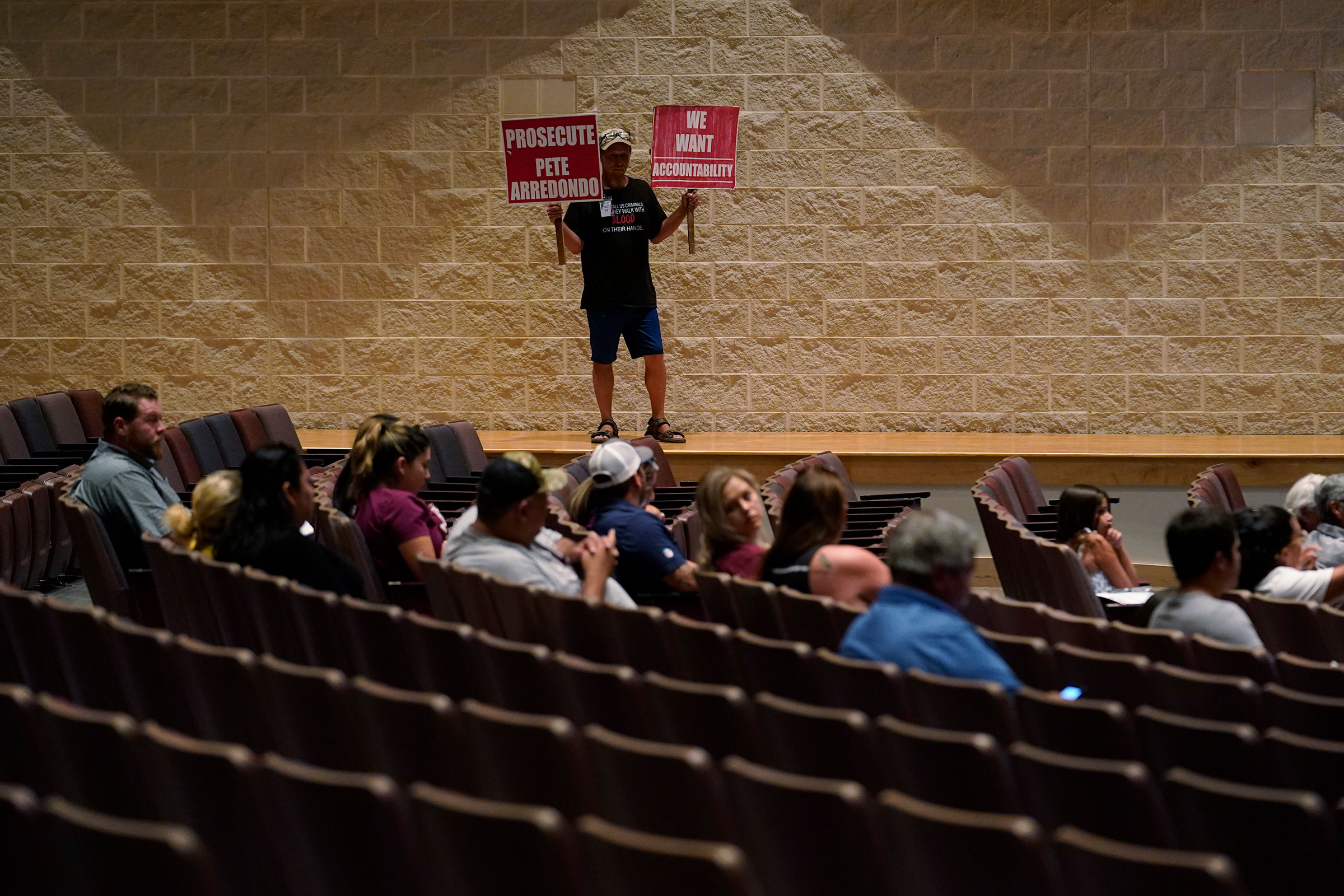
Soon a number of parents stood at a podium and demanded various things from members of the board seated on an elevated stage. But, fire Pete Arredondo – the Uvalde schools police chief who state and other law enforcement officials and researchers have said made a series of colossal mistakes the day of the mass shooting at Robb Elementary School – seemed primary among them. Get rid of Arredondo, some parents insisted, or they would not send their children back to Uvalde schools.
The demand, in many ways, confirmed what most around this small Texas town and even the nation now know. As school district police chief and a member of the city council, Pedro “Pete” Moreno Arredondo was a community leader in Uvalde, Texas, a respected figure. Now, it’s not even clear if he remains in town. In the roughly two months since 19 children and two teachers were massacred at Robb Elementary School, Arredondo first failed to appear at city council meetings and then ultimately resigned from the council July 1 amid public pressure. And, while Arredondo was not fired by Friday, the school board first agreed to meet in a special session on Saturday to consider the question then canceled the meeting at the request of Arredondo’s lawyer. The district said that due process requires them to hold it at a later date. Arredondo would, in the interim, be placed on unpaid administrative leave.
Uvalde, an overwhelmingly Latino city of just over 15,000 people, sits in deep South Texas, in a borderlands county that went to President Trump in the 2016 and 2020 elections. It’s a place where baseball caps and bumper stickers proclaiming that the owner “backs the blue” are not surprising. Now, that kind of unquestioning support of law enforcement seems harder to come by. In early July, the Advanced Law Enforcement Rapid Response Training Center (ALERRT) at Texas State University issued a report, commissioned by the Texas Department of Public Safety (DPS), that indicated that law enforcement in Uvalde may have missed multiple opportunities to stop the violence at Robb Elementary. A second report, released by an investigative committee of the Texas House of Representatives this week drew, in greater detail, much the same conclusion. While the 18-year-old gunman pulled the trigger that forever changed the town, some argue that Arredondo, the man whom multiple assessments have described as having been in charge of the response that day, may have played a significant role in enabling the scale of the massacre.
Arredondo did not respond to repeated requests for comment for this article. He did, however, issue a written statement when he resigned from the Uvalde City Council, in which he acknowledged that he had become a divisive figure.
“Uvalde has a rich history of loving and supporting thy neighbor and we must continue to do so,” he wrote. “[A]fter much consideration it is in the best interest of the community [for me] to step down as a member of the City Council…to minimize further distractions.”
For now, the police chief remains cloistered behind a veritable shield formed by fellow officers and public officials, who say they are protecting information while multiple investigations are ongoing, as well as by some of those who have known him since the longtime lawman was himself a student in Uvalde’s schools.
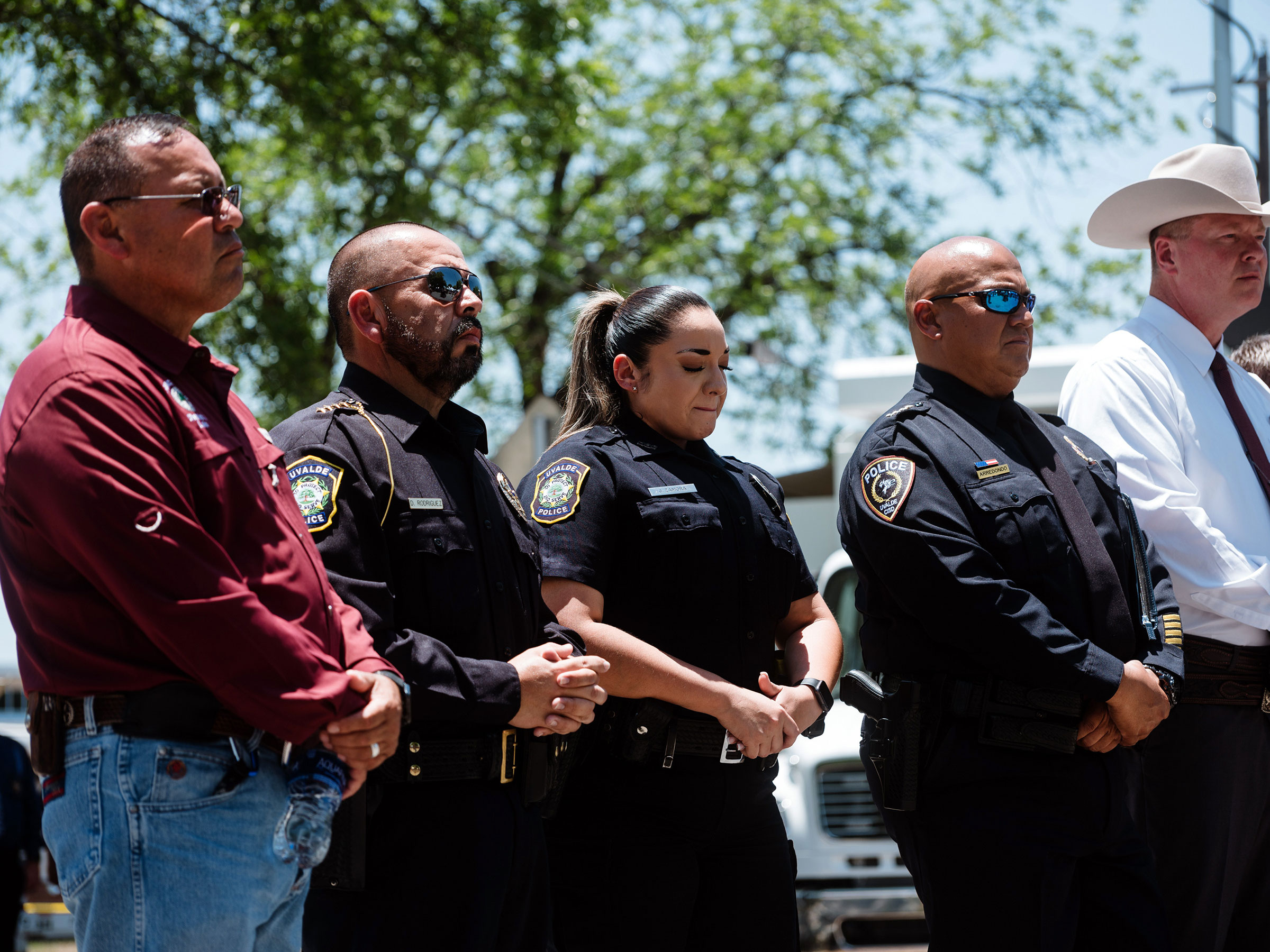
Overnight, the man they knew went from respected hometown public servant to national pariah. His story raises important questions not only about how police are trained to respond to active shooters, but also when and whether individual officers should be held accountable if that training fails.
On the surface, it seems that Arredondo, a man who has worked in law enforcement since 1993, would have the experience and insight to respond to a situation like the one at Robb Elementary School. In 2019, Texas lawmakers made an eight-hour active-shooter training course mandatory for officers working in schools. (ALERRT’s course is 16 hours.) Over the years, Texas Commission on Law Enforcement (TCOLE) records show, Arredondo has completed 5,300 hours of on-the-job activities that TCOLE considers continuing education, including 2,012 hours of training to prepare for specific challenges. That tally includes career hours and courses related to juvenile justice, community policing, and active-shooter situations, plus a course called “Managing Critical Incidents for Higher Education.” State records also show the last course Arredondo completed on Dec. 17, 2021: a mandatory eight-hour active-shooter training for school-based law officers.
Five months and seven days later, a gunman barged into Robb Elementary School.
Arredondo was born in Uvalde in 1972, just two years after the student walkout that earned Uvalde a place in Chicano history. At the time, the new building at Uvalde Memorial Hospital—an institution that 50 years later would treat many of those affected by the shooting—had only been open a few months. The community was noteworthy as home to a rancher named Dolph Briscoe, a white Democrat, who was in the middle of a successful campaign for governor. And some around town may have still been talking about the $10,000 reward offered for the safe return of Blue Sheep, a 2-year-old stallion stolen from a racetrack in nearby Del Rio, Texas. Later that year, the Uvalde High School Coyotes won the 1972 state high school football championship.
After graduating from Uvalde High School as part of the class of 1990, Arredondo completed a police training academy at an area junior college then transferred to Texas A&M’s Commerce, Texas, campus. There, he earned his undergraduate degree in organizational management, according to a profile that ran in the Uvalde Leader-News. Life near Dallas, in the more urban portion of the state, did not provide enough of a draw to keep Arredondo away from his hometown. By 1993, Arredondo had joined the Uvalde City Police Department. Over the next 16 years, he would work first as a 911 dispatcher then a patrol officer, before becoming a detective, according to the local paper.
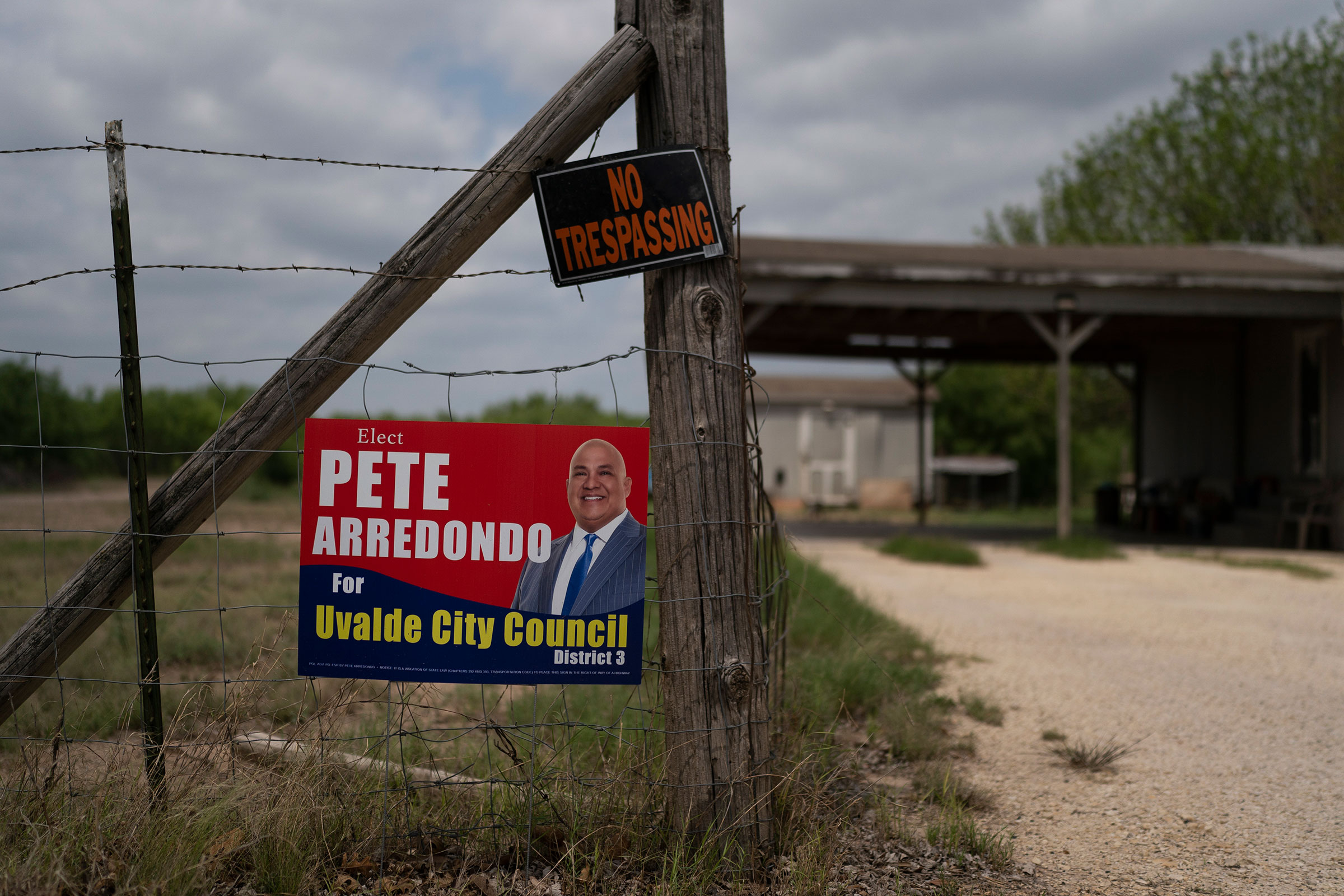
In 2009, Arredondo left his hometown again, this time for Webb County, another border community about two and a half hours south, which is home to the larger city of Laredo. There, Arredondo joined the sheriff’s department, and rose as high as deputy chief. He also worked briefly in that county’s jail before, in 2017, joining the police department serving Laredo’s public schools. It was while he was serving as a police captain in Laredo’s schools that Arredondo found out Uvalde Consolidated Independent School District, which had formed its own police department in 2018, was looking for a new police chief.
“I didn’t even have to think twice about applying,” Arredondo said in the April 2020 story in the Uvalde Leader-News, adding that a number of the district’s teachers had influenced his life in meaningful ways.
The district’s schools, like many others across the country, were at the time closed due to the pandemic. But many students and their parents, in this part of the country where wi-fi service can be weak, were coming to campus at regular intervals to collect assignments as well as free meals, says Georgina C. Pérez, a Democrat on the Texas State Board of Education representing District 1, which includes El Paso, Webb, and Uvalde Counties. Arredondo told the Leader-News that he was proud of what his team had been able to do even in that environment. A return to in-person school seemed to offer a chance for him to finally build deeper relationships with students as well as other staff.
“Of course, my title is important, but having a good group is also important,” Arredondo told the local paper. “If not, you can surely fail.”
On May 7 of this year, a little more than two weeks before the Robb Elementary School shooting, Arredondo won Uvalde’s District 3 City Council seat, collecting 126 of the 182 votes cast in a contested race.
When TIME reached out to a woman whose name is listed on a 2012 marriage record with Arredondo, as well as five people who graduated from high school alongside Arredondo, it was clear that many in the community feel protective of the officer, who until the school shooting seemed to have lived quietly in Uvalde. The woman identified in public records as Arredondo’s wife declined TIME’s request for an interview as did others who have known him for years.
Judy Quiroz, who attended Uvalde High School with Arredondo and remains his friend, tells TIME that her nephew, who is a student at Robb Elementary School and was there the day of the shooting, is “traumatized”—but that she believes the focus in Uvalde is on the wrong thing. After all, only one person is really to blame for what happened: the gunman. She says she hopes Arredondo is allowed to resign, if he wants to, rather than being fired. “When this position opened up in Uvalde…he had told me that he had always wanted to come back and help the community and go back to his hometown,” Quiroz says. “That’s why I’m just so disheartened to hear that they’re trying to get rid of him of all people because, I mean, bottom line is, it’s the shooter’s fault.”
She remains in contact with Arredondo, though she does not know specifics about his current location. “I text him and I’ll tell [Arredondo], you know, I’m thinking about you, I’m praying for you. All he does is say, `I appreciate it, thank you, I appreciate it, thank you.’”
Read more: Schools Are Putting More Cops on Campus—Despite the ‘Abject Failure’ in Uvalde
At a Texas State Senate hearing held June 21, Steven C. McCraw, Director and Colonel of DPS, was unflinching in his criticism of how law enforcement responded to the Uvalde shooting, even as he noted that his agency’s investigation into events at Robb Elementary was not then complete. “There’s compelling evidence that the law-enforcement response to the attack at Robb Elementary was an abject failure,” he said, “and antithetical to everything we’ve learned over the last two decades since the Columbine massacre.”
Arredondo had already been climbing the ranks of the Uvalde police department for about six years when the nation was shaken by the crime that marked the beginning of the modern era of mass shootings in schools. In 1999, when a pair of teens killed 12 students and one teacher in suburban Columbine, Colo., much of the damage was inflicted even as officers gathered outside. Columbine became a byword for a distinctly American form of danger and, in the law-enforcement world, the need for immediate efforts to confront active shooters.
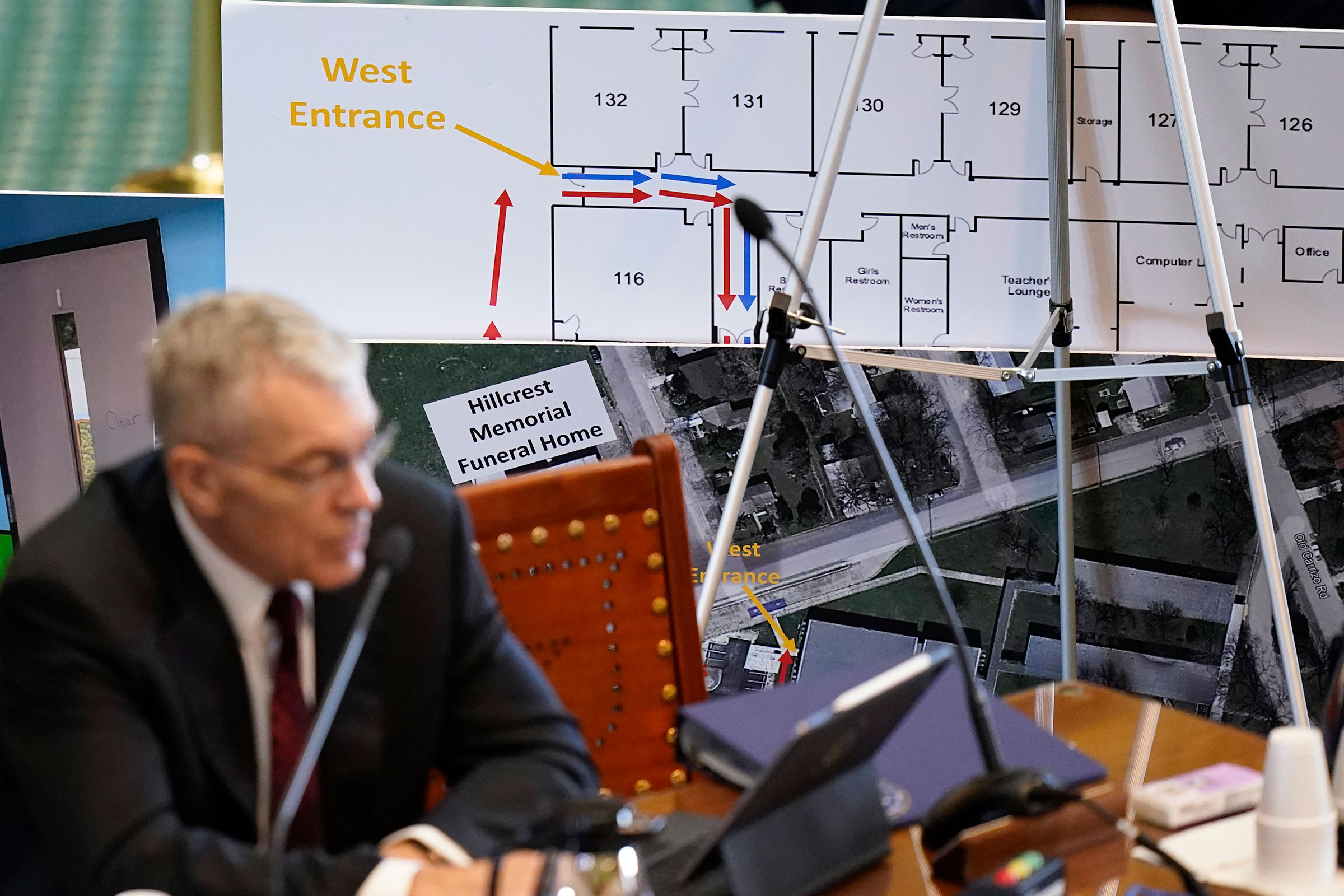
The gold standard in what the FBI calls an active shooter situation is to move immediately to stop the killing, by “neutralizing” the shooter, then to stop the dying, by providing immediate on-scene first aid to as many of the injured as one can. Hospital-based medical care should follow as quickly as possible. But investigators have found that, at Robb Elementary, Arredondo instead gave orders that effectively left the shooter in a position to fire his weapon for more than 70 grueling minutes. The gunman, armed with an AR-15-style rifle, stood in a classroom with teachers and children for more than an hour, while 376 law enforcement officials—ranging from Border Patrol agents to DPS agents, members of a San Antonio SWAT team to area game wardens—waited in Robb Elementary’s hallways and outside the school building. One officer, wearing a bulletproof vest and ballistic helmet, was even captured on video taking the time to avail himself of the contents of a wall-mounted hand-sanitizer dispenser.
“Three minutes after the subject entered the West building [of Robb Elementary] there was [a] sufficient number of armed officers wearing body armor to isolate, distract and neutralize the subject,” McCraw said at the Senate hearing. “The only thing stopping a hallway of dedicated officers from entering Room 111 and 112 was the on-scene commander who decided to place the lives of officers before the lives of children.”
That kind of waiting runs counter to the best practices for officers in active shooting situations, says J. Pete Blair, executive director of ALERRT, the Texas State University active-shooter-training center. In 2013, training provided by ALERRT—which is based at a campus that is also home to a training center where, state records indicate, Arredondo has attended sessions on at least three occasions—was deemed the “National Standard in Active Shooter Response Training” by the FBI. ALERRT has trained more than 200,000 law enforcement officers since 2002.
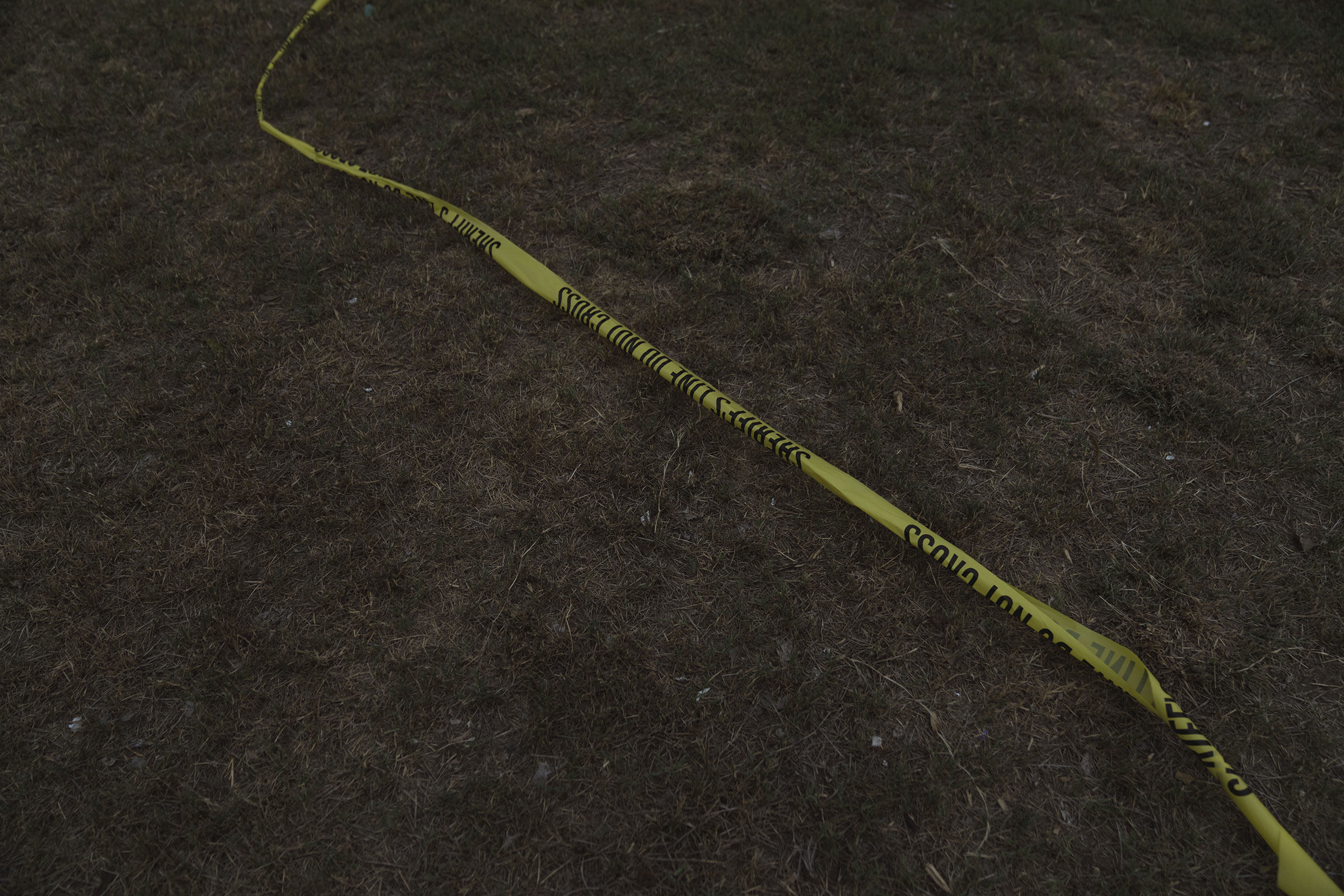
“The mindset has to be, I must and will go in,” Blair says. “Understand that your job as a police officer, one of the core functions of policing that’s really being held up to public scrutiny right now, is this idea that if something bad is happening, we expect you to stop it, even at risk of your own life.”
This means officers responding to an active shooter must put aside the natural human instinct to protect one’s own life. According to researchers at Texas State University, 82 police officers were shot during 43 active shooter events between 2000-2018; 25 of them died from their injuries.
“You are trying to get officers to enter a deadly situation where not only are other people being killed but they could be killed,” Blair says. “This extreme condition is something that most officers will go through their entire career [and] never encounter.”
In fact, he adds, most officers will go their entire career without ever firing their weapon. Though officers may have received training, the recency and quality of those lessons can affect what happens when they find themselves in a real-life situation with all its complexities. And many departments, which have become short-staffed in recent years, have limited time away for training. In the midst of all of that, officers are expected to “perform as if you are an experienced combat veteran.” To do that officers need consistent high-quality training, not something like a weekend seminar, Blair says.
None of that is to make excuses, Blair says. The core instruction of any kind of active-shooter training that he’s aware of is the same: distract, contain, or kill the shooter as quickly as possible, then immediately turn attention to trying to save the lives of the injured. No exceptions.
That said, the Supreme Court has in several cases ruled that the state, including police, has no special obligation to protect individuals except in certain circumstances. In one high-profile case from 2005, the high court ruled that police officers failing to protect people from harm is not a violation of the 14th Amendment right to due process.
And on July 17, members of a Texas House of Representatives committee designated to investigate the shooting published a 77-page report that, while it details Arredondo’s failures, also notes that he wasn’t the only person who fell short the day of the shooting. The Border Patrol unit that arrived on the scene and eventually led the classroom breach had the same information Arredondo had, the report said, but still waited for a “rifle-rated” shield and a master key before entering the classroom. A sergeant with the Uvalde Police Department, agreeing with Arredondo’s assessment of the situation, also reported the shooter was “barricaded” while requesting further equipment from DPS. The report also found that the school relied on an app rather than the school’s intercom to send out lockdown alerts, despite spotty wi-fi at Robb and the fact that not all teachers carried their phones at all times. Some did not have the app installed on their phones. Adding to security problems at Robb was its location; frequent alarms caused by border patrol chasing undocumented immigrants “contributed to a diminished sense of vigilance about responding to security alerts.”
To Rashawn Ray, a sociologist who researches policing and executive director of the Lab for Applied Social Science Research at the University of Maryland College Park, there are legitimate questions to be raised here about the effectiveness of training and the public resources being spent on it. But the struggle for accountability in Uvalde is also connected to the broader culture of silence in policing, he says. “Groupthink mentality, that’s part of the way they are trained,” he says, “and it can cause everything from everyone doing the same thing, the wrong thing, on a scene to keeping quiet about it after.”
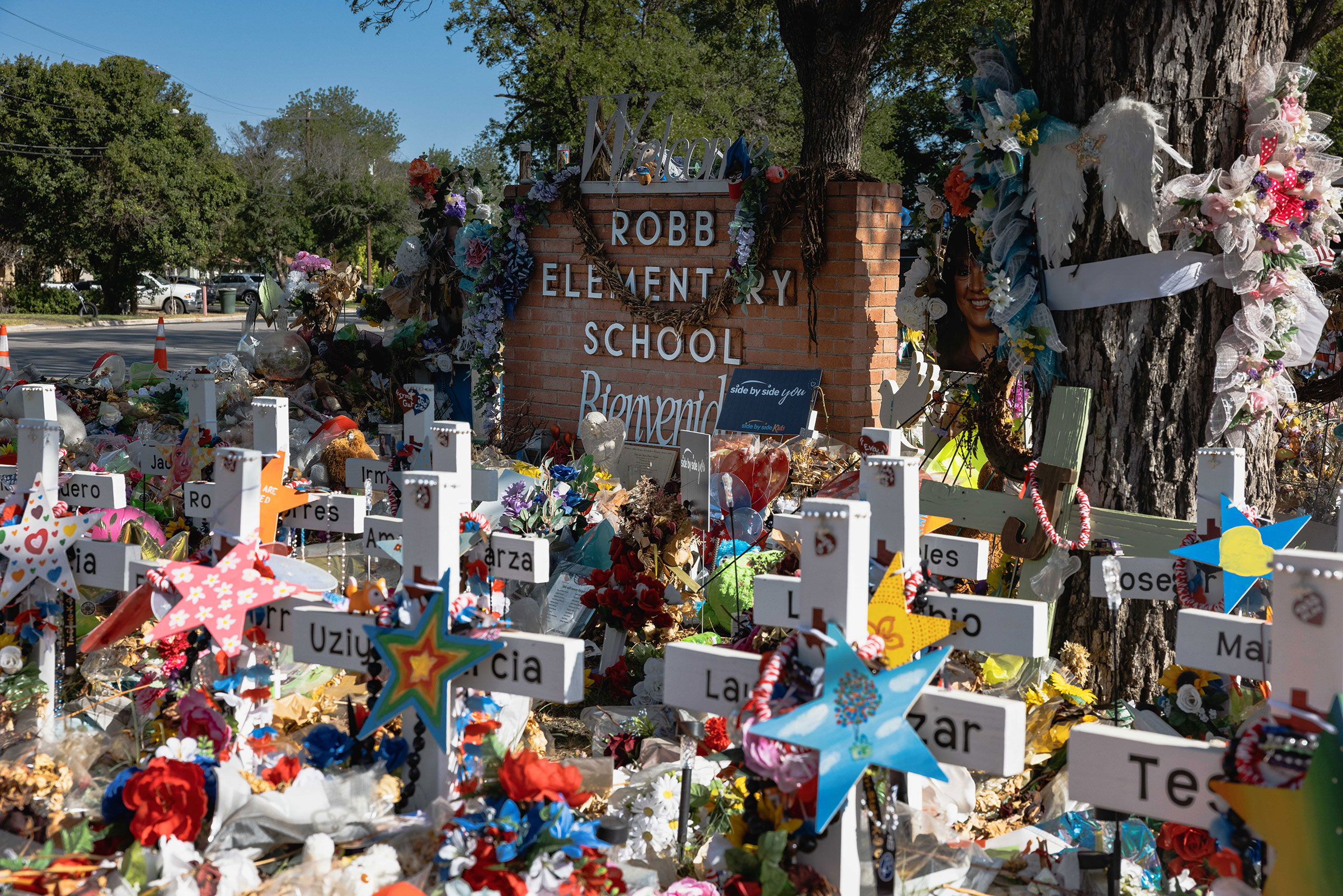
The thick wall of silence that’s developed around Arredondo makes it difficult to grasp how all his training and experience, his commitment to community and his professed enthusiasm for his job, failed to produce a better outcome on May 24.
Arredondo himself has given just one media interview since the shooting, which was published in the Texas Tribune on June 9. There he said he did not know that he was the incident commander on the scene that day. He also offered a range of explanations for why he left his radio in his vehicle, and for why officers waited for more than an hour to breach the area where the shooter was holed up with students. “The only thing that was important to me at this time was to save as many teachers and children as possible,” Arredondo told the Tribune. Arredondo similarly defended his actions when speaking to the Texas House committee. “I just knew that [the shooter] was cornered,” he said, describing the officers as a “wall” between the gunman and children elsewhere in the school.
“I don’t think of the chief, in any way, as a bad person at all,” McCraw, of the DPS, said at the State Senate hearing in June. “I just think he made some bad decisions.”
McCraw declined to speak with TIME, and repeated calls and emails to DPS, the state’s law enforcement agency, were not returned. He has said publicly that the Uvalde County district attorney has restricted the outflow of information. (“There is probably a huge civil settlement that is going to come out of this,” says Ray, the policing researcher. “So they are reluctant to say anything that might resonate.” Ray adds that he wouldn’t be surprised if conversations have already begun about the possibility of eliminating the school district’s small police force, even though the agency grew by two officers as recently as August 2021, according to the Leader-News.)
The list of problems and failures that McCraw and others identified at the June 21 hearing was long. For example, radios belonging to officers from multiple agencies did not work inside the school due to radio signal strength issues. But, amid the litany of findings discussed that day, state senators seemed split on one big question: did Arredondo bear particular responsibility, or was he just a part of a broader system that malfunctioned that day?
DPS’s initial investigation found several people had concerns over the shooter’s behavior long before the violence he committed on May 24, but did not share those concerns with law enforcement. The Texas House investigative committee on the shooting “did not find any ‘villains’ in the course of its investigation,” their report states. “There is no one to whom we can attribute malice or ill motives. Instead, we found systemic failures and egregious poor decision making.”
State senator Paul Bettencourt, a Republican from the Houston area, argued that no training “could have overcome [Arredondo]’s inability to command,” and that he “should have removed himself from the situation immediately, because just by looking at his response he’s incapable of it.”
When Bettencourt claimed that Arredondo “should have never even been in the job,” McCraw responded with one word: “Absolutely.”
One exchange between McCraw and State Senator Roland Gutierrez—a Democrat who represents a district that includes Uvalde, and who has since filed suit against DPS seeking more information about what happened that day—seemed to capture the tension. Gutierrez has raised questions publicly about the functioning of the state’s entire law-enforcement apparatus.
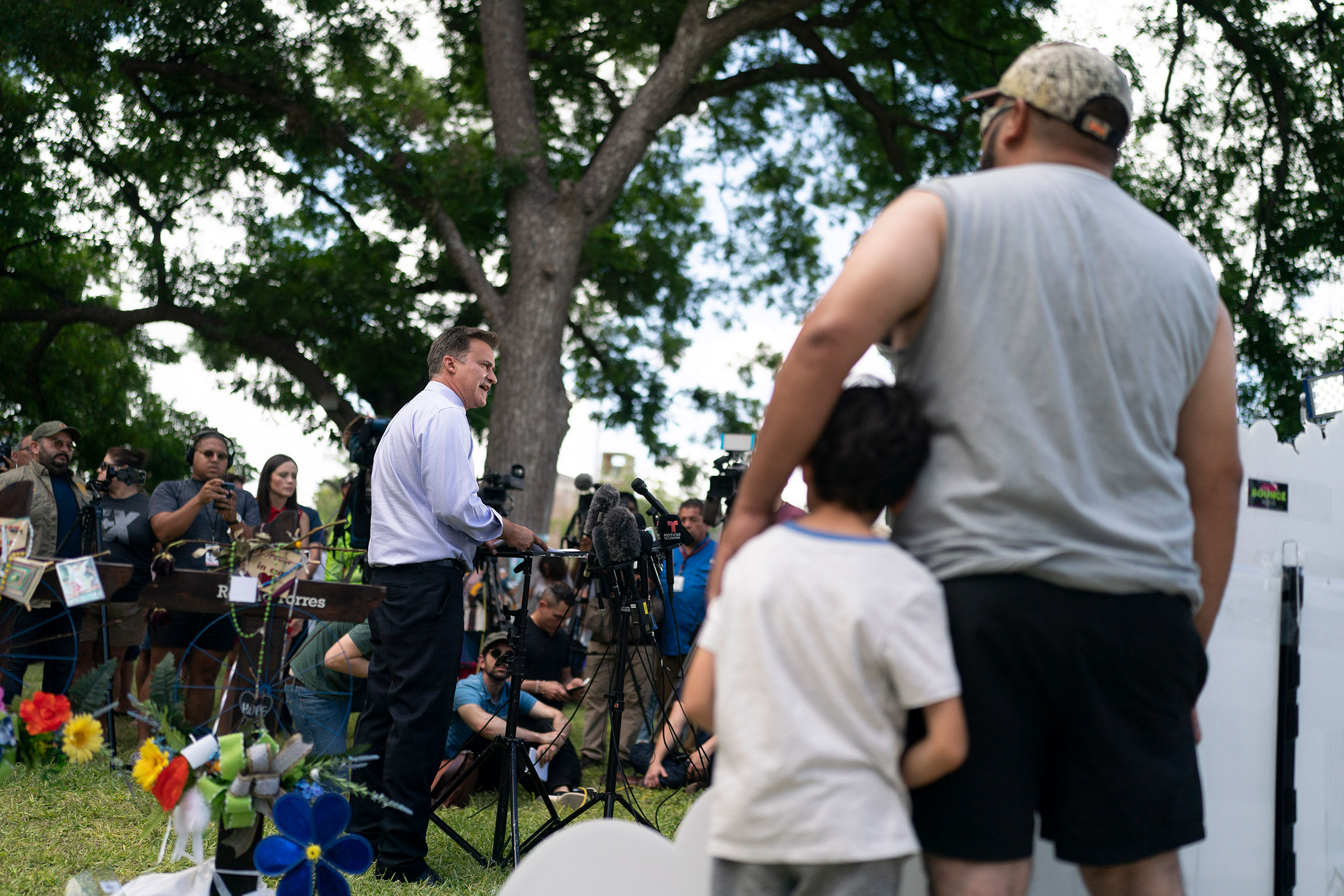
“[He] may not want to be the incident commander, but if you issue commands and if you are the ranking official, you end up being the incident commander,” McCraw said about Arredondo at the June 21 Texas Senate hearing.
When Gutierrez asked if McCraw’s declaration applies to a commander who didn’t have a working radio with which to communicate orders, McCraw countered that he “believe[s] in my heart” there were at times perhaps as many as 18 officers physically present with Arredondo in the hallway of the school—officers in earshot who would have been willing to risk their lives to act, if only their leader had told them to. And, McCraw said during the Texas Senate hearing, that it should have taken only three of them to get it done.
“But again, you’ve just testified that active-shooter protocols take precedence over incident commander and therefore every officer…should have just gone into that room,” Gutierrez said during the Texas Senate hearing. “And you and I have had that discussion before, haven’t we?”
“Well, that’s a little bit disingenuous, but yes,” McCraw said.
“Disingenuous?” Gutierrez said. “Why?”
“Because,” McCraw replied, “bottom line is there is always someone who takes the lead.”
—With reporting by Mariah Espada.
More Must-Reads from TIME
- Cybersecurity Experts Are Sounding the Alarm on DOGE
- Meet the 2025 Women of the Year
- The Harsh Truth About Disability Inclusion
- Why Do More Young Adults Have Cancer?
- Colman Domingo Leads With Radical Love
- How to Get Better at Doing Things Alone
- Michelle Zauner Stares Down the Darkness
Write to Jasmine Aguilera at jasmine.aguilera@time.com